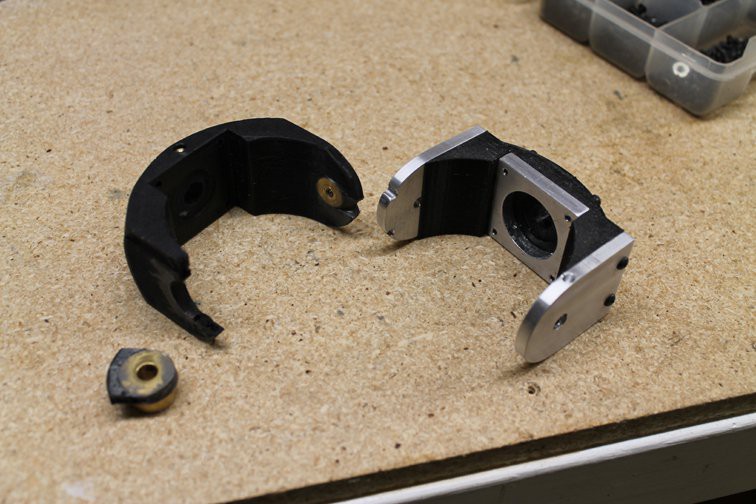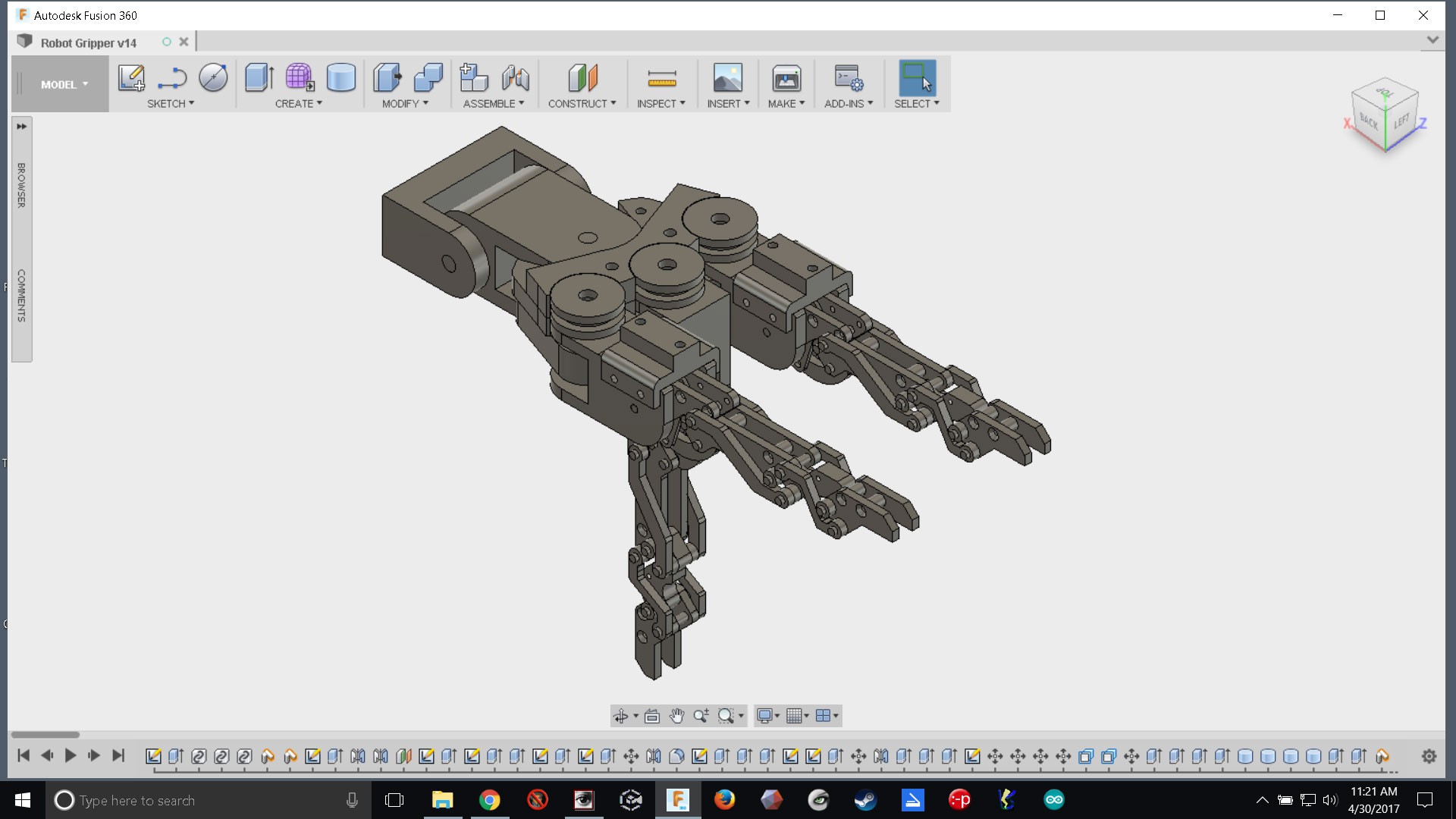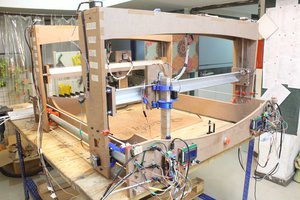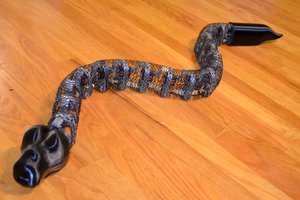The Affordable Telemetry Glove (ATG) began as an experiment in interfacing the human hand with mechatronics. 3d printers and 3d scanners are relatively new tools and I wanted to see what I could do with them. So I started playing around with the concept of the ATG.
I decided upon 8 channels of telemetric data as an appropriate place to start. Complex enough to be useful yet simple enough to be reproducible using 3d printing and other commonly available tools. That provides 2 axis of positional data each for 2 fingers, an opposable thumb, and a wrist. This, I deem, is the minimum needed to usefully control a robot gripper.
The structure of the ATG will be primarily 3d printed. The intention is to keep machined parts to a minimum. I'd like to stay away from machined metal parts entirely, but sometimes plastic just does not cut it in terms of durability.

Here is a perfect example of aluminum sometimes being preferable to plastic. My initial attempt at a thumb capture didn't last long. That's it on the left with the broken bit laying next to it. The next iteration of the thumb capture is there on the right with its gloriously unbreakable aluminum parts. The real trick to designing a mechanism to be made with 3d printed parts is to know when not to do it! Sometimes you just have to go for it and then back off once things get breaky. I've been playing with different types of printer filaments (PLA, polycarbonate, ABS, nylon alloys, and carbon fiber filled) but for the sake of simplicity I will try to stick with PLA. "Affordable" is featured in the name of this project after all.
Potentiometers strategically placed at the appropriate joints will provide positional data to a microcontroller, which will in turn control a servo operated mechanical hand. The components are still in flux. I started building my prototype with 10k ohm potentiometers I picked up at All Electronics for cheap and then I thought, "hey these were so cheap they must be crap", and I bought some nicer ones, only to discover the cheap ones were probably good enough. We'll see.
I plan on using an Arduino to track the changes in hand joint position and translate the pot values into PWM signals. These signals will then actuate the servos connected to the corresponding joints of a robot gripper. The gripper is currently in the design phase. It consists of the 3 "underactuated" fingers and a 2 axis wrist. The servos will likely be Hitec 805BBs because they are big and strong and only cost 35 bucks each. Smaller servos of comparable strength can get pricey. Affordability, blaa blaa blaa. I would like to keep the robot gripper 3d printable as well, possibly using Taulman Alloy 910 filament for the various parts, which is pretty tough stuff. Then again, maybe I will end up getting the parts water jet cut from .125" aluminum plate. Metal robot hands have an awesomeness all their own. We'll see.

The mechanical hand is just one possible application for the ATG. Virtual Reality offers some very interesting possibilities for hand telemetry. However, robot grippers are what I know so that's where I am going with this project.
As humans, our hands are fundamental to how we experience the world. We touch things to validate our other senses. We use our hands to explore and manipulate our environment. Technology is providing us with unprecedented opportunities to explore and experience the world and it is critical that we have the use of our hands. By means of telepresence we can now travel through the expanses of outer space or the depths of the oceans. Virtual reality allows us to create and explore worlds of pure imagination. The Affordable Telemetry Glove will provide the means of making a difference in these new worlds.
 Brian Poor
Brian Poor

 Nishant Agarwal
Nishant Agarwal
 Vipin M
Vipin M
 Anthrobotics
Anthrobotics
 Neuntoter
Neuntoter
awesome project i'm currently studying robotics and as a end of program project i have been developing a glove to control a robotic arm. my problem was creating the mechanical part of the arm since we learn more about electronics, circuit boards and programming. the school has lent us a interesting tiny robot. and we have a 3D glove that we are currently working on. thought it cool to here about a similar project.